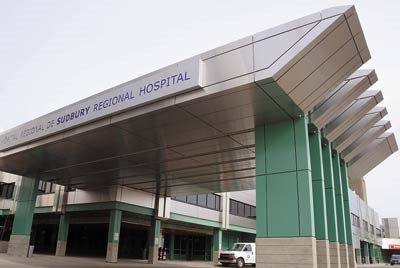You can’t come up with solutions to a problem unless you truly understand what’s gone wrong, according to North East Local Health Integration Network (NE LHIN) CEO Louise Paquette.
With this idea in mind, last year, staff members at the regional health funding and planning agency, began looking from a different perspective at the perennial issue of alternate level of care (ALC) patients occupying hospital beds.
ALC patients are those who no longer need acute care, but remain in hospital because they are unable to find placement in community facilities such as nursing homes.
They realized that 60 per cent of ALC patients in the region are in the four largest hospitals in the northeast — Sudbury Regional Hospital, Sault Area Hospital, North Bay General Hospital and the Timmins and District Hospital.
“Then we said ‘If we know 60 per cent of the ALC patients in northeastern Ontario are actually in these four hospitals, what measures can we take?’” Paquette said. “By using the information, we began to understand what was going on in those four hospitals.”
After a number of strategies were put in place in all four communities, the number of ALC patients at these four hospitals has dropped by half to an average of 13 per cent since August 2010, Paquette said.
Strategies put in place to reduce ALC numbers in the Sudbury area include enhanced home care for those who leave hospital, better discharge planning and a nurse who works with the elderly in the emergency room.
Sudbury Regional Hospital is also focusing on a number of outpatient clinics, such as a diabetes care centre, to prevent people from needing inpatient hospital care in the first place.
A new nursing home, St. Gabriel’s Villa also opened recently, with 92 of its 128 beds now occupied. All of the beds at St. Gabriel’s are expected to be filled by the end of the month. Pioneer Manor also recently opened 24 new nursing home beds.
Dr. Denis Roy, CEO of Sudbury Regional Hospital, said thanks to the new beds at St. Gabriel’s and Pioneer Manor, the percentage of beds at the hospital occupied by ALC patients is now down to the lowest it’s been in a long time. They now occupy about 30 beds, or 6.8 per cent of the beds at the hospital.
Memorial Hospital, which has acted as a transitional care unit for some of the city’s ALC patients, is now down to about 61 patients, as those who lived there are sent to nursing homes. The hospital plans to keep Memorial open as a “surge” unit for up to 75 ALC patients who do not need long-term care.
Just a few months ago, there were about 130 ALC patients at Memorial, and between 60 and 80 in the hospital’s acute care facility, Roy said.
“Is this going to last?” Roy asked. “It’s going to last through the summer, I hope. We’re pretty confident that all of the other things we’ve put in place, like the diabetes clinic, will help to keep the numbers down.”
Although the number of ALC patients is down throughout the northeast, Paquette, like Roy, doesn’t want to rest on her laurels.
“Managing the health system is definitely a work in progress,” she said.
Join Sudbury.com+
- Messages
- Post a Listing
- Your Listings
- Your Profile
- Your Subscriptions
- Your Likes
- Your Business
- Support Local News
- Payment History
Sudbury.com+ members
Already a +member?
Not a +member?
Sign up for a Sudbury.com+ account for instant access to upcoming contests, local offers, auctions and so much more.
